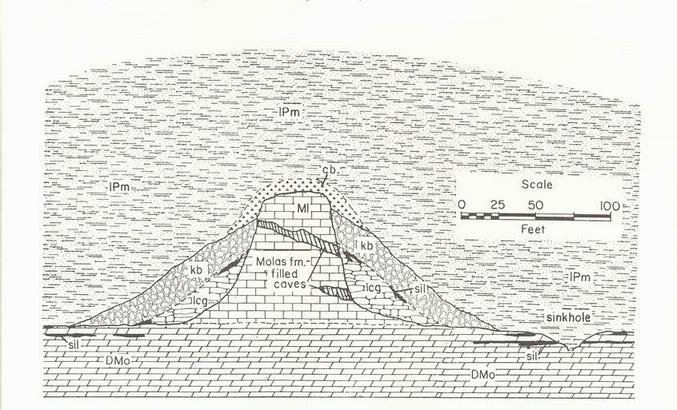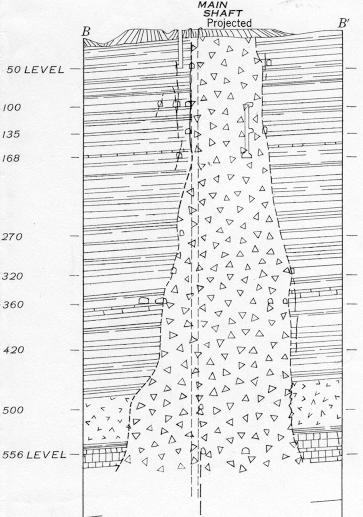What does a mineralized paleokarst area look like? A fascinating and documented paleokarst hosted mineral districts in Colorado is the Leadville mining district.
Here is an article that explains the types of paleokarst features and shows how they can be used to reconstruct the original landscape as an aid to mineral exploration.
Cross-sectional view of a mineralized paleocave at the Sherman Mine in the Leadville mining district. From [Tshauder, et al, 1990].
 |
Paleokarst cave filled with base-metal silver mineralized sand |
While most of the paleokarst features we've described so far ( caves, sinkholes, etc.) have been toopographicall negative - where limestone has been removed, karst and paleokarst hills or "towers' exist also.
Follow this link to an article detailing a tower karst terrrain.

Karst Tower Cross from Maslyn (1977).
A commonly asked question is "How do I recognize paleokarst features in the field or in published descriptions?"
Here's an article describing several different type of paleokarst with examples of each from the ancient rock record.
 |
This is an example of a paleokarst breccia pipe mineralized with Cinnabar in the Terlingua, Texas mining district. The pipe bottoms in a breccia filled limestone chamber. Upward stoping collapse extended the pipe to the surface. From Yates and Thompson(1959). |